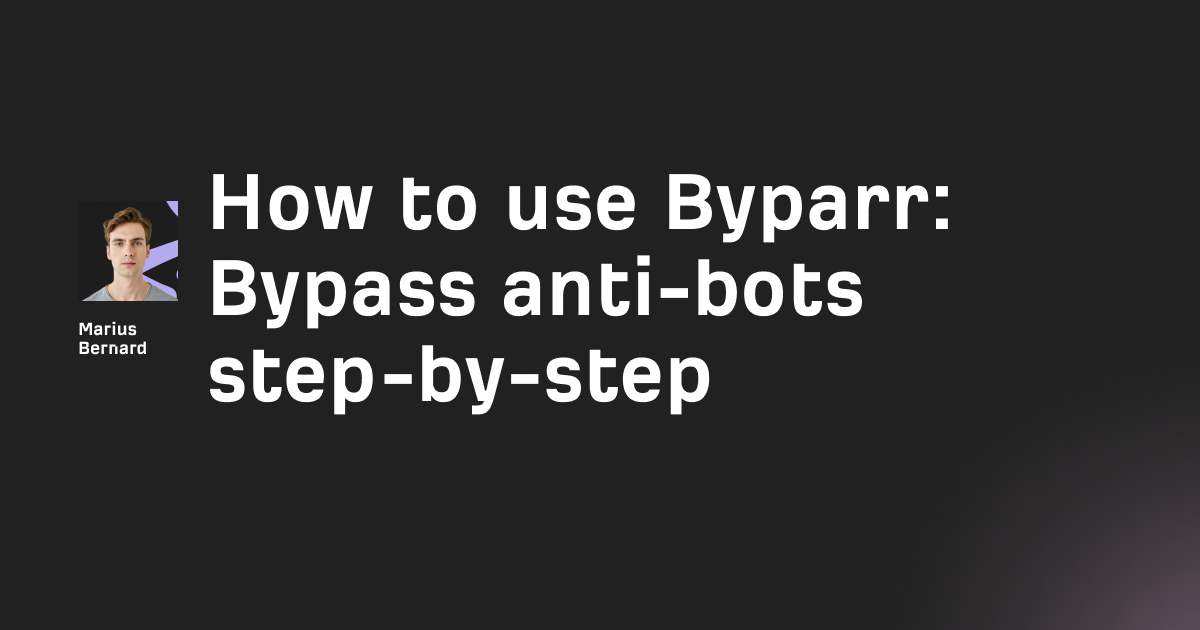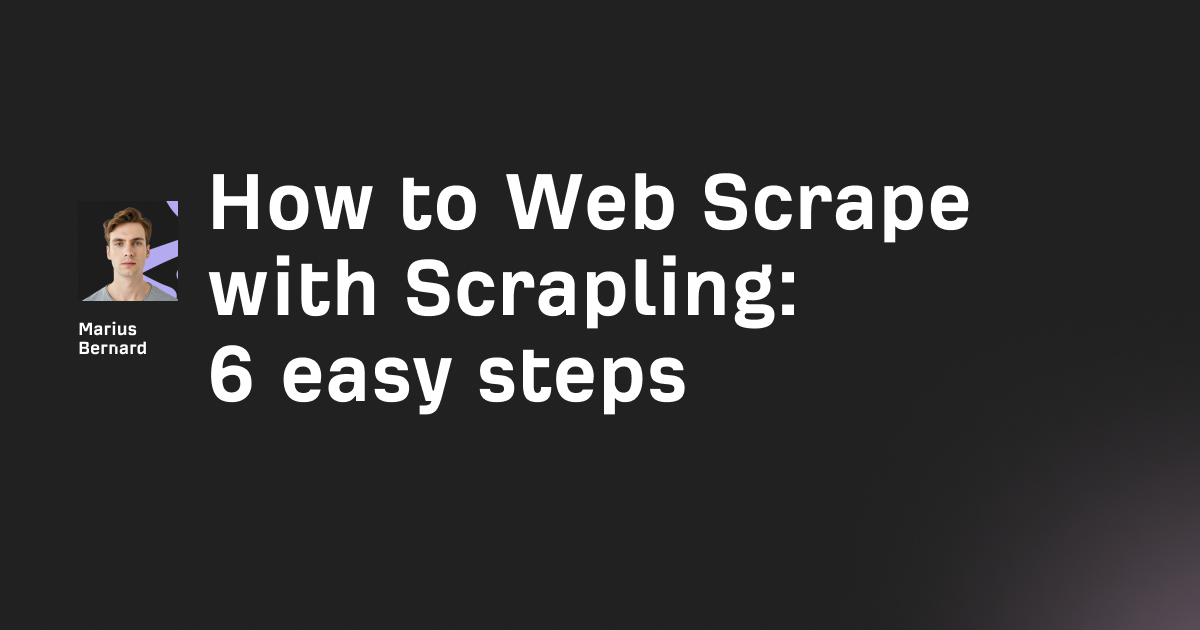If you’re choosing between Playwright and Selenium in 2025, don’t stop at GitHub stars or glossy docs. The real separator is architecture—specifically, how each framework talks to the browser. Playwright uses persistent WebSocket connections and the native DevTools Protocol (CDP), while Selenium speaks via the WebDriver API over HTTP. That one design choice cascades into differences in speed, scalability, and—crucially—detection resistance against modern anti-bot systems.
Below, I’ll re-tell the story end-to-end in a hands-on, tech-guide format you can scan, apply, and ship. Expect step-by-step breakdowns, code blocks you can paste, and clear advice on when to pick Playwright vs. Selenium (and when to skip browsers entirely with requests/httpx).
The Protocol Wars: Why Architecture Actually Matters
TL;DR: Protocol choices dictate everything—latency, reliability under load, the ability to intercept network traffic, and what anti-bot defenses can “see.”
- Selenium: Your test or scraper talks HTTP to a WebDriver server (e.g., ChromeDriver on port 9515). The driver then translates commands into CDP (or equivalent) for the browser.
- Playwright: Your script speaks directly to the browser via a persistent WebSocket using the browser’s native protocol (CDP for Chromium, plus custom integrations for Firefox/WebKit).
Why you should care: Every extra hop adds latency, state drift opportunities, and more detectable surface area. In practice, that’s the difference between a test suite that idles at 2 a.m. and one that sprints through a JavaScript-heavy SPA before breakfast.
How to apply this: When speed, stability under parallel loads, or surgical network interception matter, bias toward Playwright. When institutional constraints, legacy coverage, or existing Grid infrastructure dominate, Selenium still earns its keep.
How Selenium Really Works Under the Hood
Selenium’s four-step communication chain is deceptively simple until you trace a single click all the way down and back:
- Test Script → WebDriver API
- WebDriver API → Browser Driver (ChromeDriver, GeckoDriver, etc.)
- Browser Driver → Browser (driver translates to browser-specific protocol like CDP)
- Browser → Driver → Script (response bubbles back)
What looks like a one-liner…
driver.find_element(By.ID, "submit").click()
…actually triggers this round-trip:
# 1) JSON command created:
{"method": "POST", "url": "/session/xxx/element/yyy/click"}
# 2) HTTP request sent to ChromeDriver on port 9515
# 3) ChromeDriver translates to Chrome DevTools Protocol (CDP)
# 4) Chrome executes the action
# 5) Response travels back through all layers
Why it matters: Each hop introduces measurable latency and potential points of failure. In representative benchmarks, a simple element click lands around ~536ms with Selenium vs ~290ms with Playwright—nearly 2× slower for the Selenium path on the same machine and page.
How to apply this: If your suite spends most of its time clicking, typing, waiting, and repeating across JavaScript-heavy pages, that overhead compounds fast.
Playwright’s Direct CDP Approach
Playwright keeps the conversation tight: your script holds an always-on WebSocket to the browser and sends native commands with no translation layer.
// Playwright bypasses the middleman
await page.click('#submit');
// Direct WebSocket message to the browser
// No HTTP overhead, no driver translation
Key advantage.
Less glue. More control. Lower jitter. Playwright also ships first-party support for route interception, request blocking, and context-level isolation, which become decisive when you care about speed, resource usage, and anti-bot evasion patterns.
Speed Benchmarks: The Numbers Nobody Shows You
On identical hardware (16GB RAM, 2.6GHz) targeting the same dynamic e-commerce site across 100 iterations, results looked like this:
Where the gap really widens: JavaScript-heavy sites (React SPA with lazy-loaded content):
- Selenium: ~60-minute suite
- Playwright: 30–40 minutes
- Playwright with network interception: 18–22 minutes
How to apply this: On a React SPA, plan for Playwright + request blocking (details below). Keep Selenium for cross-browser compliance runs or where your org standardizes on Selenium Grid.
Bypassing Detection: The Cat and Mouse Game
Modern anti-bot vendors don’t just read navigator.webdriver. They correlate hundreds of traits: execution order, CDP tell-tales, WebSocket patterns, timing fingerprints, GPU/codec quirks, and more.
Why Standard Selenium Gets Caught
Out-of-the-box Selenium often leaks classic fingerprints:
# Selenium leaves these fingerprints by default:
navigator.webdriver = true # Dead giveaway
window.cdc_adoQpoasnfa76pfcZLmcfl_Array # ChromeDriver property
navigator.plugins.length = 0 # Headless Chrome marker
# Plus ~50 other detectable properties
The Undetected ChromeDriver Approach
import undetected_chromedriver as uc
options = uc.ChromeOptions()
options.add_argument("--disable-blink-features=AutomationControlled")
driver = uc.Chrome(options=options)
# Patches most detection vectors automatically
# But still detectable by advanced systems
Observed success rates (rule of thumb, not guarantees):
- Basic bot detection: ~95% success
- Cloudflare (standard): ~70% success
- DataDome / PerimeterX: ~30–40% success
How to apply this: For light protections, undetected-chromedriver helps. For aggressive vendors (DataDome, PerimeterX), expect an arms race and plan alternate strategies.
Playwright’s Stealth Mode Limitations
from playwright_stealth import stealth_sync
with sync_playwright() as p:
browser = p.chromium.launch()
page = browser.new_page()
stealth_sync(page) # Applies evasion patches
Caveat: CDP itself is detectable. Advanced systems watch for:
- Runtime.enable command patterns
- CDP connection signatures
- WebSocket traffic heuristics
The Nuclear Option: Patching CDP Detection
// Using patchright (Playwright fork) to hide CDP
const { chromium } = require('patchright');
const browser = await chromium.launch();
// Modifies Playwright to avoid sending Runtime.enable
// Reduces detection from 100% to ~67% on CreepJS
How to apply this: If your use case is compliance-critical, consult counsel and your site’s ToS. Technically, patched stacks can reduce CDP tells—but come with maintenance risk and ethical/legal considerations.
Network Interception: The Speed Hack Most Miss
Playwright’s Request Blocking is the easiest “day-one” optimization for scraping JavaScript-heavy sites.
// Block all images, CSS, fonts - instant ~40% speed boost
await page.route('**/*.{png,jpg,jpeg,css,woff,woff2}', route => route.abort());
// Or be surgical - only load API responses
await page.route('**/*', route => {
const type = route.request().resourceType();
return ['document', 'xhr', 'fetch'].includes(type)
? route.continue()
: route.abort();
});
This alone can cut scraping time by 30–50% on media-heavy pages while improving parallel efficiency.
Selenium’s CDP Workaround
Selenium 4 added CDP hooks, but they’re clunkier and often local-only:
# Block images using CDP in Selenium
driver.execute_cdp_cmd('Network.enable', {})
driver.execute_cdp_cmd('Network.setBlockedURLs', {
'urls': ['*.jpg', '*.png', '*.gif', '*.css']
})
# But you lose this on remote WebDriver!
# Only works with local ChromeDriver
How to apply this: If you’re stuck with Selenium, squeeze what you can from CDP locally. For remote WebDriver/Grid, assume patchy or absent CDP and plan accordingly.
The Request-Based Alternative Nobody Talks About
Often the fastest “browser automation” is no browser at all. If the site exposes JSON endpoints or server-rendered HTML, go straight to HTTP and parse.
import httpx
from selectolax import HTMLParser
# 10x faster than any browser automation
response = httpx.get('https://api.example.com/products',
headers={'User-Agent': 'Mozilla/5.0...'})
html = HTMLParser(response.text)
# Parse static content without 300MB Chrome overhead
products = html.css('.product-card')
When to skip the browser entirely:
- API endpoints are accessible or easily reverse-engineered
- Content is server-rendered (not React/Vue)
- No complex client-side interactions needed
- Cost-sensitive or scale-limited environments
How to apply this: Always check the Network tab first. If you can scrape via requests/httpx or Scrapy/BeautifulSoup, you’ll win on both speed and cost.
Real-World Decision Matrix
Use Playwright When:
- Speed is critical: ~35–40% faster execution on average
- Modern JavaScript sites: Better SPA handling and stability
- Resource constraints: ~44% less memory per instance observed
- Parallel scraping: Higher efficiency and fewer flake timeouts
- Network manipulation needed: First-class route interception
Stick with Selenium When:
- Legacy browser support matters (older Safari/IE11 scenarios)
- Existing Selenium infrastructure reduces migration cost
- Real device testing flows through Selenium Grid/farms
- Enterprise mandates: Org-wide standardization on Selenium
- Team expertise: Years of know-how and utilities built around WebDriver
Consider Alternatives When:
- Pure API access possible: Skip browsers
- Simple HTML parsing suffices: Go BeautifulSoup/Scrapy
- Extreme anti-bot protection: Specialized services or human-in-the-loop
- Cost-sensitive at scale: Browsers are expensive to run en masse
Advanced Tricks: The Stuff That Actually Works
Mixing Approaches for Maximum Speed
Log in with Playwright, scrape with requests—keep the best of both worlds.
# Start with Playwright for login/authentication
async with async_playwright() as p:
browser = await p.chromium.launch()
page = await browser.new_page()
await page.goto('https://example.com/login')
await page.fill('#username', 'user')
await page.fill('#password', 'pass')
await page.click('#submit')
# Extract cookies after login
cookies = await page.context.cookies()
await browser.close()
# Switch to requests for actual scraping (10x faster)
import requests
session = requests.Session()
for cookie in cookies:
session.cookies.set(cookie['name'], cookie['value'])
# Now scrape at lightning speed without browser overhead
response = session.get('https://example.com/api/data')
Why it works: Browsers unlock hard parts (auth, MFA, JS churn). Once you’re “inside,” HTTP wins on throughput and reliability.
The CDP Bridge Pattern
Combine Selenium’s familiarity with Playwright’s network superpowers.
# Use Selenium for compatibility, Playwright for speed
from selenium import webdriver
from playwright.sync_api import sync_playwright
# Start with Selenium
driver = webdriver.Chrome()
driver.get('https://example.com')
# Connect Playwright to the same browser via CDP
playwright = sync_playwright().start()
browser = playwright.chromium.connect_over_cdp(
f"http://localhost:{driver.service.port}"
)
# Now use Playwright's superior API on Selenium's browser!
page = browser.contexts[0].pages[0]
page.route('**/*.png', lambda route: route.abort())
When to use: You’re mid-migration or need Grid/infra from Selenium but crave Playwright-style request control.
Fingerprint Rotation at Scale
Rotate high-signal traits across contexts to avoid obvious patterns.
// Rotate everything that matters
const contexts = [];
for (let i = 0; i < 10; i++) {
const context = await browser.newContext({
viewport: {
width: 1920 + Math.random() * 100,
height: 1080 + Math.random() * 100
},
userAgent: userAgents[Math.floor(Math.random() * userAgents.length)],
locale: locales[Math.floor(Math.random() * locales.length)],
timezoneId: timezones[Math.floor(Math.random() * timezones.length)],
});
contexts.push(context);
}
// Round-robin through contexts to avoid pattern detection
Pro tip: Pair rotation with request throttling, randomized delays, and circuit breakers to mimic organic traffic and avoid mass bans.
How to Make Playwright Even Faster (and Quieter)
- Block non-essential assets (images, fonts, analytics tags).
- Disable animations with CSS overrides or prefers-reduced-motion in the context.
- Coalesce navigation: minimize full page reloads; rely on in-page SPA transitions.
- Prefer locators over brittle selectors; failing retries waste time.
- Use
page.waitForResponsewith tight predicates to avoid global sleeps.
Example route rule that keeps your pipeline lean:
await page.route('**/*', route => {
const r = route.request();
const type = r.resourceType();
const url = r.url();
// Allow core doc + API
if (type === 'document') return route.continue();
if (['xhr','fetch'].includes(type)) {
// Allow only JSON APIs you need
if (url.includes('/api/') || url.includes('/graphql')) return route.continue();
}
// Block the rest
return route.abort();
});
How to Squeeze More from Selenium (When You Must)
- Use Selenium 4 CDP locally to block heavy assets (see snippet above).
- Adopt
undetected-chromedriverwhen light anti-bot checks interfere. - Run headful where it helps—headless defaults can be fingerprinted.
- Spread load across nodes with realistic pacing; avoid synchronized bursts.
- Stabilize waits: explicit waits on expected conditions beat arbitrary sleeps.
Minimal example of explicit waits that cut flaky retries:
from selenium.webdriver.common.by import By
from selenium.webdriver.support.ui import WebDriverWait
from selenium.webdriver.support import expected_conditions as EC
wait = WebDriverWait(driver, 15)
wait.until(EC.element_to_be_clickable((By.ID, "submit"))).click()
How to Decide: A Quick Playbook
Ask these first:
- Is the content API-addressable? → Use httpx/requests or Scrapy.
- Is the page SPA-heavy with dynamic content? → Playwright with request interception.
- Do you need broad cross-browser or legacy support? → Selenium and possibly Grid.
- Are you scaling to dozens/hundreds of parallel workers? → Playwright for perf & memory profile.
- Are you facing aggressive anti-bot vendors? → Consider specialized providers, human-in-the-loop, or re-evaluate strategy.
Common Pitfalls (and How to Avoid Them)
- Chasing feature lists vs. architecture: A shiny API doesn’t change the physics of your network path.
- Ignoring detection: Even “stealth” plugins leave trails; treat evasion as probabilistic, not guaranteed.
- Over-fetching assets: Loading images and fonts on a headless scraper torpedoes throughput.
- Global sleeps: Replace with event-driven waits.
- One-size-fits-all stacks: Mix Playwright, Selenium, and HTTP clients tactically.
The Verdict: It’s Not Either/Or
In 2025, the pragmatic stance isn’t tribal—it’s compositional:
- Playwright for scraping: speed, modern JS sites, native network interception, better parallel efficiency, smaller memory footprint.
- Selenium for testing: cross-browser breadth, entrenched enterprise/Grid setups, legacy compatibility.
- Requests/HTTPX for APIs: when you can bypass the browser entirely.
- Specialized tools or patching when anti-bot pressure spikes—and only with eyes open to maintenance and risk.
The biggest mistake? Choosing by features instead of architecture. Playwright’s WebSocket-first design isn’t just “faster.” It reshapes what’s possible: reliable request shaping, higher concurrency, and smarter evasion. Selenium remains a stalwart where standards, org mandates, and device labs matter. The smart teams stitch them together, measure ruthlessly, and let the workload decide.
Quick Reference: Copy-Paste Snippets
Playwright: Block heavy assets
await page.route('**/*.{png,jpg,jpeg,gif,css,woff,woff2}', r => r.abort());
Playwright: Keep only API + document
await page.route('**/*', r => {
const t = r.request().resourceType();
return (t === 'document' || t === 'xhr' || t === 'fetch')
? r.continue()
: r.abort();
});
Selenium 4: Block assets via CDP (local)
driver.execute_cdp_cmd('Network.enable', {})
driver.execute_cdp_cmd('Network.setBlockedURLs', {'urls': ['*.png','*.jpg','*.gif','*.css']})
Hybrid: Login with Playwright, scrape with requests
# (See full example above)
session = requests.Session()
# ...set cookies from Playwright...
resp = session.get('https://example.com/api/data')
Bridge: Connect Playwright over Selenium’s CDP
browser = playwright.chromium.connect_over_cdp(f"http://localhost:{driver.service.port}")
FAQ-Style Recap (Long-Tail Keywords Included)
- Is Playwright faster than Selenium for SPAs?
Typically yes: benchmarks show 35–40% faster runs and better parallel execution on React SPA workloads. - How does Playwright’s WebSocket DevTools Protocol improve speed?
It removes the WebDriver HTTP hop, reducing latency and giving native network interception. - Can Selenium 4 match Playwright’s request blocking?
Partially, locally via execute_cdp_cmd. Remote WebDriver/Grid usually can’t, which limits parity. - What about anti-bot detection (Cloudflare, DataDome, PerimeterX)?
Undetected ChromeDriver helps on light-to-medium checks. For heavy hitters, expect CDP detection and consider mixed strategies or specialized services. - When should I avoid browsers entirely?
When the target has API endpoints, server-rendered HTML, or easily reverse-engineered calls—httpx/requests or Scrapy will be ~10× faster and cheaper.
Final Word
Pick the right protocol for the job. If your KPIs are throughput, cost per page, and ban rate, you’ll likely land on Playwright + request interception for scraping, Selenium for cross-browser test coverage, and HTTP clients whenever you can sidestep the DOM entirely.
Measure, iterate, and remember: architecture beats aesthetics—every time.








